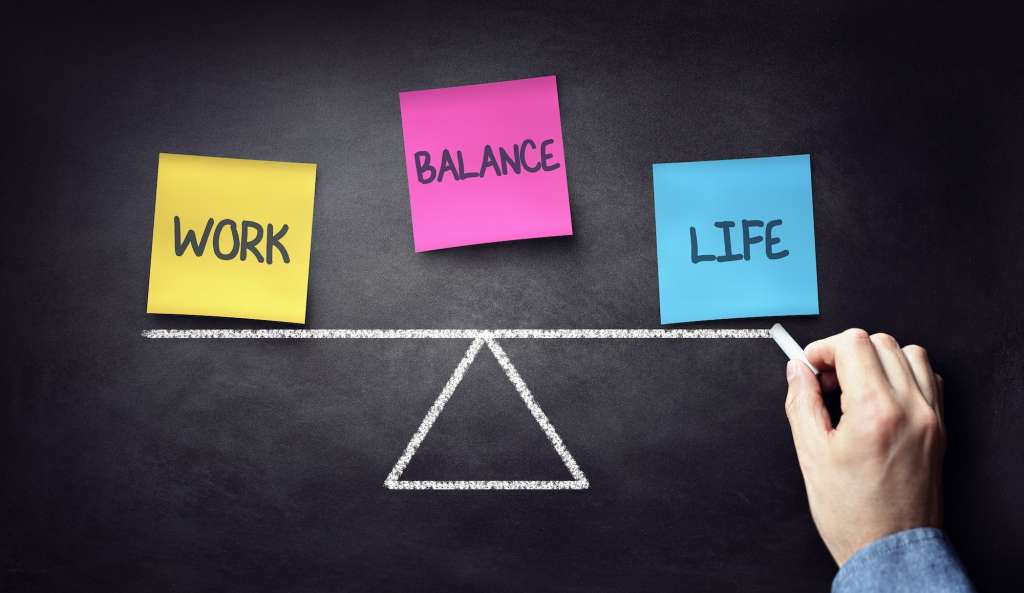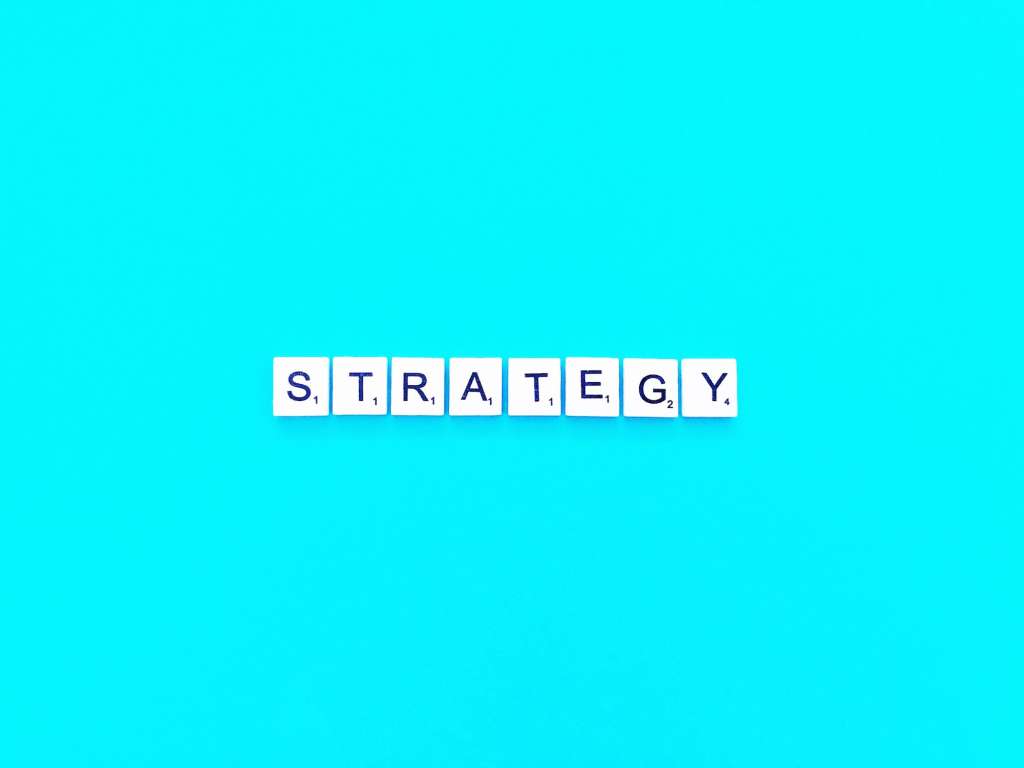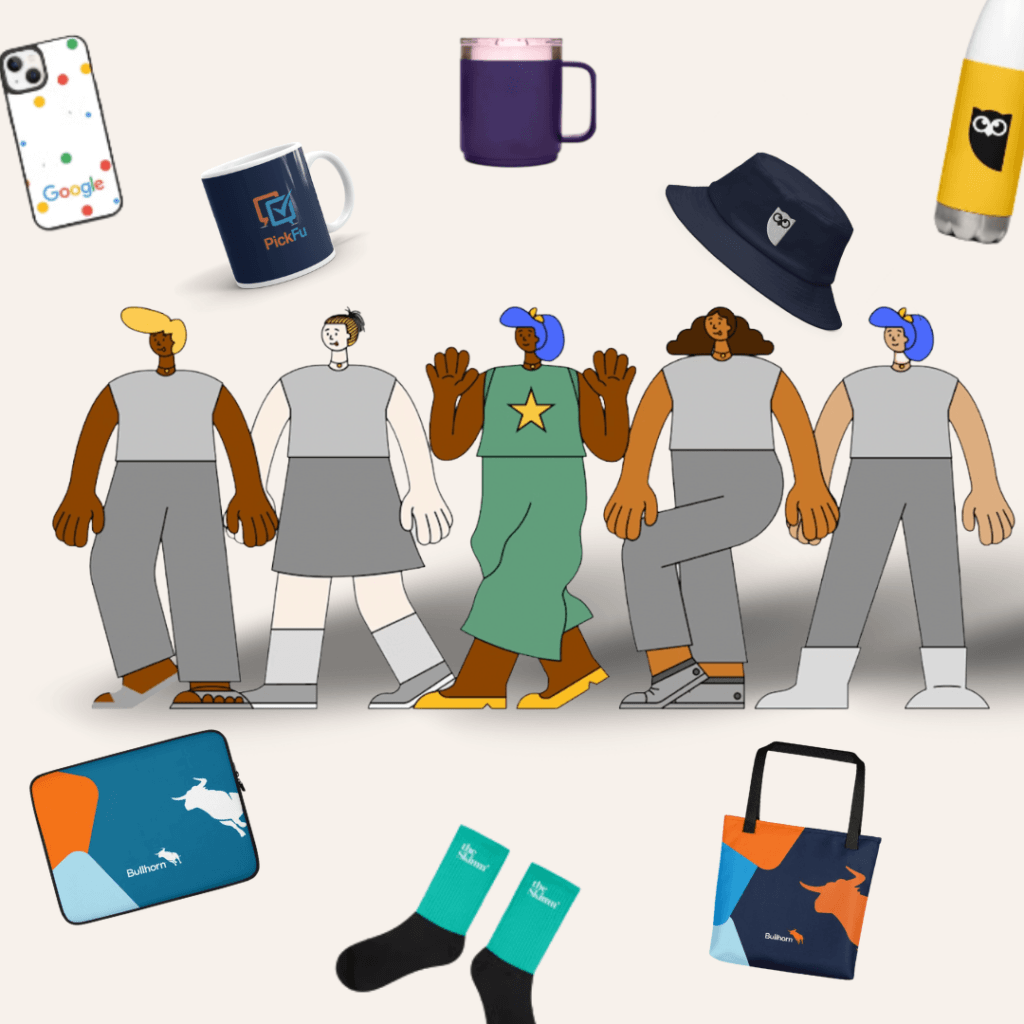
How SwagMagic can help your brand?
- Bulk Buy & Save on your gifts!
- Curate Customized Swag Boxes!
- Launch Your Store for your employees!
- Secure Swag Storage with us!
Work-life balance is a term that has garnered a lot of attention in recent years, especially as the lines between work and personal life continue to blur. Despite the buzz, achieving a healthy work-life balance remains an elusive goal for many.
According to a recent research by Gallup, 66% of full-time workers in the United States feel a lack of balance between work and life.
But why is this employees’ work-life balance so crucial, and how can we attain it?

Why Healthy Work-Life Balance is Important?
While achieving perfect balance may be an ongoing struggle, its importance cannot be overstated for several key reasons.
Curate the perfect box of handpicked gift they’ll love and send joy their way
Mental and Physical Health
Long working hours and high-stress work environments can take a toll on physical and mental health at work. Stress can lead to anxiety, depression, and other mental health disorders. Physical health may also suffer, as stress can exacerbate conditions like high blood pressure, heart disease, and diabetes.
Proper balance allows time for exercise, relaxation, and spending quality moments with loved ones, contributing to improved mental and physical well-being.
Enhanced Productivity and Creativity
A well-balanced life can actually make you more productive at work. When you have time to recharge and engage in activities you enjoy, you’re more likely to return to work with renewed enthusiasm and creativity.
Burnout, often caused by overwork and stress, can result in diminished productivity and poor job performance.
Relationship Quality
Spending too much time at work can strain personal relationships and lead to negative consequences. Partners, children, and friends can feel neglected when work consistently takes priority. This can lead to relationship issues and further compound stress and unhappiness.
Deciding on how much time you want to spend doing your job will help allocate time to nurture and maintain your relationships.
Employee Retention and Satisfaction
From an organizational perspective, promoting work and leisure balance isn’t just an ethical obligation; it’s also good for business. Employees are more likely to stay with a company that respects their need for a balanced life.
High levels of stress and burnout can lead to high employee turnover, which incurs costs in recruitment and training new staff.
Personal Development
Work is undoubtedly an important aspect of life, providing financial security and personal satisfaction. However, it is not the sole avenue for personal development. Hobbies, leisure activities, and time spent with family and friends can also offer immense personal growth opportunities.
A balanced work-life ensures that you do not miss out on these enriching experiences.

The Challenges in Achieving Work-Life Balance
There could be many reasons why you do not have a healthy work-life balance. Here are a few of them.
Work Demands and Overwork
One of the significant barriers to adjust your schedule is the ever-increasing demands of the workplace. Employers often expect employees to put in long hours to meet tight deadlines, participate in after-hours meetings, or be on-call during weekends.
This can be physically exhausting and mentally draining, leaving little time for personal activities or family. People may miss important life events, or find it difficult to maintain relationships, engage in hobbies, or simply rest and recharge.
Time Management Issues
Poor time management can cause tasks to take longer than necessary, leading to workdays that extend into personal time. Procrastination, lack of planning, and multitasking can exacerbate the problem.
The inability to manage time efficiently can lead to higher stress levels, reduced productivity, and less personal time, which can negatively impact health and well-being.
Technological Distractions
The ubiquity of smartphones and other connected devices makes it easy for work to intrude into personal time. Whether it’s a late-night email from a boss or an urgent project update, technological distractions are ever-present.
This constant connectivity makes it difficult to ‘switch off’ from work, leading to heightened stress and decreased quality of personal life.
Remote Work Challenges
Remote work has many benefits, but it has also blurred the lines between work and personal life. Your office is your home and vice versa, making it difficult to ‘switch off’ from work mode.
People may find themselves working odd hours, struggling to separate home chores from work tasks, and feeling like they are always ‘on the clock,’ leading to potential burnout.
Family and Caregiving Responsibilities
Many people have to balance work demands with the responsibilities of being a parent, caregiver, or both.
This dual role can be time-consuming and emotionally draining, causing both professional and personal lives to suffer. Stress and fatigue can affect performance at work, while lack of time and emotional availability can strain family relationships.
It’s not always a small feat and requires concerted efforts from both individuals and organizations. By recognizing the challenges and actively seeking solutions, a more balanced life may be within reach.

Signs and Symptoms of Poor Work-Life Balance
Poor balance makes a huge difference in a variety of ways that affect both personal well-being and work performance and later lead to depression and anxiety. Below are some signs and symptoms that you might be struggling with office and at home :
Physical Signs
-
- Chronic Fatigue: A constant state of tiredness, even after waking up from sleep.
-
- Weakened Immune System: Falling sick more frequently.
-
- Changes in Weight: Either rapid weight loss or weight gain.
-
- Sleep Disorders: Insomnia, nightmares, or excessive sleeping.
-
- Frequent Headaches or Migraines: Particularly when considering work-related issues.
Emotional Signs
-
- Increased Stress Levels: Feeling overwhelmed or anxious regularly.
-
- Depression: Prolonged periods of sadness or unexplained crying spells.
-
- Irritability: Lower tolerance levels, shorter fuse, or being easily frustrated.
-
- Reduced Motivation: Less enthusiasm toward work or even daily activities.
-
- Feelings of Being Overwhelmed: A sense that tasks, either at work or at home, are unmanageable.
Cognitive Signs
-
- Reduced Concentration: Inability to focus during work or personal activities.
-
- Poor Decision-making: Making hasty or unusually poor decisions.
-
- Forgetfulness: Failing to remember important dates, tasks, or obligations.
-
- Rumination: Constantly thinking about work issues during personal time or vice versa.
Behavioral Signs
-
- Social Withdrawal: Pulling away from friends and family.
-
- Reduced Productivity: Struggling to accomplish tasks in a timely manner.
-
- Procrastination: Postponing work or personal responsibilities.
-
- Substance Abuse: Increased reliance on alcohol, caffeine, or drugs.
-
- Neglecting Responsibilities: Failing to meet work deadlines or family commitments.
Relationship Indicators
-
- Strained Family Relationships: Less quality time and increased tension with loved ones.
-
- Reduced Social Interaction: Skipping social events or gatherings.
-
- Conflict Between Work and Personal Commitments: Missing family events due to work or vice versa.
Organizational Symptoms
-
- Increased Absenteeism: Taking more days off from work.
-
- Frequent Job-hopping: Constantly changing jobs in search of a better balance.
-
- Decline in Work Quality: Lower quality of work, missed deadlines, and increased errors.
-
- Disengagement: Lack of interest in work, colleagues, or organizational goals.
When it comes to work-life balance and mental health issues, be aware if these symptoms arise in areas of your life. If you notice several of these, it could point to a poor day at work. Address the issue before it severely impacts your health or quality of life.

How to Improve Your Work-Life Balance? – Scientific Ways, Methods and Strategies
The amount of time you spend and time away from work to find balance will mean different things to each person. Achieving balance in today’s fast-paced world requires mindful effort, planning, and prioritization. Here are some strategies you can use to find a balance between your professional life and the other areas of your life:
Self-Assessment
-
- Identify Priorities: Understand what matters most to you in both your work and personal life.
-
- Track Time: Keep a record of how you spend your time for a week. You can then identify areas for improvement.
-
- Set Boundaries: Know when to say no, both at work and at home. You don’t have to take on every project or social invitation that comes your way.
Planning and Scheduling
-
- Time Blocking: Allocate specific blocks of time for work, family, and leisure. Stick to the schedule but allow for some flexibility.
-
- List-making: Create lists for tasks you need to accomplish both professionally and personally. Make sure to not overwhelm yourself.
-
- Use Technology: Utilize apps and tools to remind you of tasks, appointments, and even downtime.
Adapt and Review
-
- Regular Check-ins: Take some time every week or month to review your goals and adjust your strategies accordingly.
-
- Be Flexible: Life is unpredictable. Be prepared to adapt your strategies as your work or personal circumstances change.
Achieve and Improve Your Work-Life Balance At Work
-
- Take Breaks: Don’t eat at your desk. Step out for a walk or meditate for a few minutes to break the monotony.
-
- Communicate: Speak openly about your workload and concerns with your employer. Work on finding solutions together.
-
- Remote Work: If possible, explore remote or flexible working options that can help you balance your personal commitments.
Achieving Work-Life Balance At Home
-
- Quality Time: Spend meaningful time with family and friends without distractions like phones or work emails.
-
- Self-Care: Exercise regularly, eat well, and make time for hobbies or activities that you enjoy.
-
- Unplug: Limit screen time and social media to reduce stress and increase the quality of your personal time.
Work-Life Balance is Important – General Tips
-
- Learn to Delegate: Don’t be afraid to delegate tasks at work, and share household chores at home.
-
- Seek Support: Utilize your support networks both in the workplace and among friends and family.
-
- Be Present: Wherever you are, be it at work or at home, try to be fully engaged in what you are doing at that moment.
Remember, the perfect employee and employer balance may not exist, but making small, consistent efforts can lead to a significantly more balanced and fulfilling life.

Work-Life Balance for Different Groups and Job Roles
The idea of a balanced work-life ratio can vary significantly across different groups and job roles.
Here’s how this concept applies to a variety of situations:
Traditional Office Employees
For traditional 9-to-5 office employees, having enough time to work and being able to leave their jobs at the office allows for uninterrupted personal time in the evenings and weekends. Challenges include overtime, work brought home, and being expected to be on call during off-hours.
Remote Workers
Remote workers are, in particular, struggling to find the balance to separate professional and personal responsibilities. The absence of a physical boundary (the office) means work can easily seep into personal time. Setting boundaries and having a dedicated workspace at home can help.
Shift Workers
People in professions like healthcare, law enforcement, and customer support often work irregular hours, making work habits more complex. Adequate rest and recovery time, as well as flexible scheduling where possible, are important for these workers.
Freelancers & Gig Workers
Freedom and flexibility are the hallmarks of freelance and gig work, but they can be a double-edged sword. While there’s often the freedom to set one’s own hours, the irregular income and the lack of job security can mean that work overshadows other aspects of life.
Executives and Senior Management
Executives often have demanding schedules and high levels of responsibility, which can impede work-life balance. However, they also typically have more control over their schedules and more resources (like personal assistants) to manage their time effectively.
Working Parents
For working parents, work-life balance is not just about personal relaxation but also about spending quality time with family. Employer flexibility, such as remote work options or flexible hours, can make a significant difference.
Students and Part-time Workers
For students who work part-time, the concept of work-life balance includes juggling studies, work, and social activities. Time management skills are crucial for maintaining balance.
Creative Professionals
Writers, artists, and other creative professionals often struggle with work-life balance because inspiration can strike at any time, blurring the boundaries between work and life. Scheduling creative time can help, as can setting financial or project-based goals.
Millennials and Gen Z
Younger generations often value work-life balance more than older generations and are more likely to consider it a crucial factor in job selection. Many are even willing to trade-off a higher salary for a better balance and more flexibility.
Old Age Workers
As employees near retirement, work-life balance can involve a transition into roles that are less demanding or a shift into part-time work. Some older workers might prioritize roles that allow them to mentor younger employees or contribute to meaningful projects as they wind down their careers.
Cultural Differences
In some cultures, work is heavily prioritized over personal life, while others put more emphasis on life outside of the office. Attitudes toward work-life balance are different for everyone from country to country, affecting how it’s managed.
Understanding the specific challenges and opportunities for work-life balance will help in different aspects of our lives, and groups can help employers and employees craft more effective strategies for achieving this balance.

Role of Employers in Facilitating Work-Life Balance
The issue of work-life balance has gained considerable attention in recent years, especially as the nature of work has evolved with technological advancements and societal shifts.
Employers play a pivotal role in facilitating a certain number of hours for their employees, which not only boosts morale, attract and retain but can also improve productivity and reduce turnover.
Setting Realistic Expectations
- Task Management: Employers should set realistic goals and deadlines that allow employees to plan their time efficiently. Overburdening staff with tasks that cannot be completed within a reasonable time frame can lead to stress and burnout.
- Role Clarity: Clearly defined job roles and responsibilities help employees know what is expected of them, thus reducing workplace stress and allowing for better work-life balance.
Flexibility in Working Conditions
- Remote Work: If the job allows, giving employees the option to work remotely can help them better manage their personal and professional responsibilities.
- Flexible Hours: Some companies offer flexible working hours, compressed workweeks, or staggered shifts to accommodate the varying needs of their employees.
- Job Sharing: For roles that allow it, job-sharing can be a way to offer greater time flexibility. Work doesn’t always mean working long hours but maintaining both work and home.
Encouraging Time Off
- Paid Leave: Employers should not only provide sufficient paid leave but also encourage its use for vacations, family needs, or personal days.
- Mental Health Days: Recognizing the importance of physical and mental health, some organizations offer mental health days in addition to standard sick leave.
Employee Support Programs
- Employee Assistance Programs (EAPs): Many organizations offer EAPs that provide counseling services for stress, family issues, and other personal problems that may affect work performance.
- Childcare Services: On-site childcare services or subsidies for external services can make a world of difference for working parents.
- Health and Wellness Programs: These can include gym memberships, stress management courses, and regular health check-ups.
Open Communication
- Feedback Channels: Regular check-ins and surveys can help employers understand the specific needs and concerns of their employees related to work-life balance.
- Clear Policies: Transparent policies regarding work hours, overtime, and time off can alleviate employee stress.
Technology Utilization
- Time Management Tools: Employers can provide software and apps that help employees manage their tasks efficiently.
- Disconnect Policy: Some companies have policies that discourage the sending of emails or conducting work outside of regular working hours to respect personal time.
Lead by Example
- Senior Management: If the leadership demonstrates a good work-life balance, it is more likely to become a part of the company culture.
Giving Swag and Corporate Gifts: Best Way to Improve Work-Life Balance
Using corporate gifts for employees and staff as a tool to achieve work-life balance requires a nuanced approach.
Below are some ways in which custom swag, snacks, and personalized gifting can be strategically used to promote work-life balance among employees.
- Wellness Packages: Swag items like stress balls, wellness apps, or premium subscriptions to meditation services can help manage work-related stress.
- Home Office Swag: Providing quality home office supplies can make remote work more efficient and comfortable, allowing employees to better balance work and family commitments.

- Virtual Experience Gifts: For remote teams, virtual experiences like online cooking classes or virtual reality games can offer a fun break and promote work-life balance.
- Fitness Gear: Gifting fitness trackers or subscription boxes of healthy snacks can inspire employees to focus on their health, which in turn can contribute to better work-life balance.
- Gift Cards for Leisure Activities: Offering gift cards for activities such as dining, movies, or spa services can encourage employees to take time for themselves.
Wondering where to get all these gift items and who will take care of all the hassles involved in the process of gifting?
At SwagMagic, we understand that achieving work-life balance is more than just a trend; it’s a necessity for sustainable productivity and well-being.
That’s why our curated collection of custom swag is designed to enhance both your professional and personal life.
From high-quality apparel that makes a statement in the boardroom, to lifestyle accessories that add a touch of magic to your downtime, we’ve got you covered.
Say goodbye to generic, forgettable gifts and hello to personalized swag that reflects your company’s unique culture while enriching your team’s lives.
With SwagMagic, you’re not just investing in promotional items, you’re investing in the happiness and well-being of your team.
Let us help you find the perfect balance. Book a consultation call now.
Creating a culture that promotes work-life balance is not just beneficial for employees; it also benefits employers by improving employee satisfaction, reducing absenteeism, and increasing productivity.
In a world where the lines between work and life are increasingly blurred, taking proactive steps to ensure a healthy balance can be a game-changer for any organization.

Common Myths and Misconceptions About Work-Life Balance
The concept of work-life balance has gained considerable attention in recent years as people strive to juggle the demands of professional and personal lives. However, several myths and misconceptions about work-life balance persist, often leading to confusion, stress, or poor decision-making.
Work-life Balance is a 50-50 Split
Many people believe that achieving work-life balance means dividing one’s time equally between work and one’s personal life. This is rarely the case. Work-life balance varies from person to person and can involve an unequal distribution of time depending on individual priorities, circumstances, and life stages.
Work-life Balance is a Luxury
Some argue that only those with high-paying jobs or a lot of free time can afford to maintain a work-life balance. However, anyone can implement basic principles of balance, like setting boundaries or prioritizing tasks, regardless of their economic situation.
Work-life Balance is a Women’s Issue
While it is true that women often face unique challenges related to work-life balance, such as societal expectations around motherhood, it’s a misconception that men do not need or desire balance. Work-life balance is a cycle and is important for everyone, regardless of gender.
Technology Makes Work-life Balance Easier
While technology like smartphones and laptops have made it easier to work from home, they have also blurred the lines between work and personal life. Being constantly connected can make it harder to “switch off” from work during personal time, thereby affecting the balance.
You Have to Work Less to Have a Better Balance
Achieving a work-life balance does not necessarily mean reducing your workload. It may mean working more efficiently or delegating tasks. The focus is to find balance and achieve a fulfilling equilibrium between work and personal life, not merely reducing work hours.
More Free Time Equals Better Work-life Balance
Having a lot of free time doesn’t automatically lead to a balanced life. The quality of that time and how it aligns with your personal goals and values are more indicative of true balance. Whereas the definition of work-life balance may differ from person to person.
Work-life Balance is Static
People often think that once they achieve a “work-life balance, it will remain that way. In reality, work-life balance is dynamic and constantly needs adjustment as life circumstances change, such as when starting a family, changing jobs, or aging.
Employers Don’t Care About Your Work-life Balance
While this may be true in some work environments, many companies are recognizing the benefits of a balanced workforce, such as increased productivity and reduced employee turnover. Some companies are implementing policies like flexible hours and mental health support to assist employees in achieving a better work-life balance.
Work-Life Balance Means Less Commitment to Work
Seeking a balanced life doesn’t mean you are less dedicated to your job. On the contrary, employees who maintain a healthy work-life balance often report higher job satisfaction and are more productive when they are working.
Work-Life Balance is Just a Trend
Some may argue that the concept of work-life balance is just a fad. However, the desire for a harmonious balance between personal life and work is a fundamental human need that has been around for generations.
Understanding these myths and misconceptions can help you aim for a more realistic and personalized approach to achieving work-life balance.

Books to Read to Understand Work-Life Integration
Finding the right work-life balance can be a challenging endeavor. Here are some books that offer different perspectives, tips, and strategies for achieving a more balanced life:
Self-Help & Productivity Books
- “The 4-Hour Workweek” by Timothy Ferriss – This book promotes the idea of automating your life and outsourcing tasks to achieve more free time.
- “Essentialism: The Disciplined Pursuit of Less” by Greg McKeown – McKeown argues that prioritizing the “essential” can lead to a more balanced and fulfilling life.
- “Deep Work: Rules for Focused Success in a Distracted World” by Cal Newport – Newport discusses the benefits of deep work and how it can help you achieve more in less time.
- “Boundaries: When to Say Yes, How to Say No to Take Control of Your Life” by Dr. Henry Cloud and Dr. John Townsend – This book explores setting boundaries in different aspects of life, including work.
Psychology & Mental Wellbeing Books
- “Flow: The Psychology of Optimal Experience” by Mihaly Csikszentmihalyi – Understanding how to achieve a state of “flow” can lead to a more balanced and fulfilling life.
- “The Paradox of Choice: Why More Is Less” by Barry Schwartz – Schwartz delves into how the abundance of choice in modern society can lead to anxiety and dissatisfaction, offering solutions for simplifying choices to improve well-being.
- “Man’s Search for Meaning” by Viktor E. Frankl – Though not directly about work-life balance, this book deals with finding purpose and meaning, which can help guide you towards a more balanced life.
Family and Relationships Books
- “The 7 Habits of Highly Effective Families” by Stephen R. Covey – Covey provides a roadmap for balancing work and family responsibilities.
- “Lean In: Women, Work, and the Will to Lead” by Sheryl Sandberg – Though focused on women, this book offers valuable insights into balancing a demanding career with a fulfilling personal life.
- “Overwhelmed: Work, Love, and Play When No One Has the Time” by Brigid Schulte – This book explores the challenges of juggling work, family, and personal time and offers practical advice.
Mindfulness and Spirituality Books
- “The Power of Now: A Guide to Spiritual Enlightenment” by Eckhart Tolle – Tolle offers advice on living in the present, which can be useful for balancing different aspects of life.
- “Wherever You Go, There You Are: Mindfulness Meditation in Everyday Life” by Jon Kabat-Zinn – This book introduces the concept of mindfulness as a tool for balance and mental clarity.
- “The Art of Happiness” by Dalai Lama – This book provides spiritual insights into finding happiness, which can guide you in balancing your life effectively.
Reading these books can give you the tools to reevaluate your priorities, manage your time more effectively, and achieve a more satisfying work-life balance.
Work-life balance is not a luxury; it’s a necessity for mental health, physical well-being, and overall happiness. While challenges exist, there are numerous strategies, tools, and resources that can help you achieve a balanced life. Take the first step today; your future self will thank you.

Leave a Comment